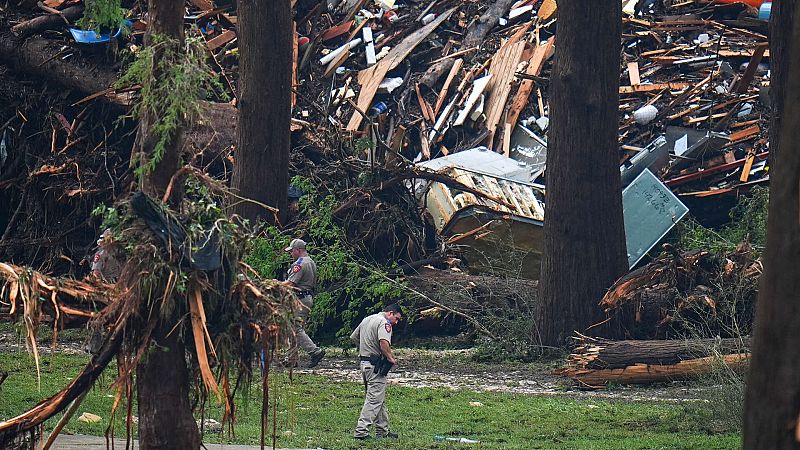The Devastating Impact of Flash Floods in Central Texas
A catastrophic flash flood event in central Texas over the weekend has left at least 80 people dead, with dozens still missing and entire neighborhoods submerged under water. The region, known as the Hill Country, is characterized by rocky hills, plains, and valleys between San Antonio and Austin. A slow-moving storm brought heavy rainfall, overwhelming riverbanks and submerging small towns with rapidly rising waters that many could not escape.
Among the most affected were children attending a summer camp along the Guadalupe River. Fast-rising water struck before dawn with little warning, leaving at least 10 children and one counselor missing. Officials have described the event as a “100-year flood,” but this term may not accurately reflect the current and future risks associated with such extreme weather events.
Climate Change Intensifies Storms
Central Texas has long been referred to as “flash flood alley” due to its combination of steep terrain, tropical moisture, and slow-moving storms—especially in July. However, meteorologists say the scale of this week’s rainfall was anything but typical. In Kerrville, more than 25 cm of rain fell in just three hours, while a separate storm west of Austin dropped nearly 35 cm of rain in five hours.
In the town of Hunt, the Guadalupe River swelled from about 2 meters to almost 9 meters in a matter of hours, reaching its second-highest level on record. This highlights the growing intensity of extreme weather events linked to climate change. Scientists have long warned that global warming is intensifying extreme weather, including flash floods, across the world.
Studies show that warmer oceans and a wetter atmosphere are fueling stronger and more frequent storms. In Europe, for example, climate change made the floods that ravaged Central Europe twice as likely. Similarly, after storms hit Greece with record rain and floods in late March, scientists found that similar storms are now 10-15% wetter than they would have been in the past.
In Texas, these effects were evident. The combination of near-record water temperatures in the Gulf of Mexico, remnants of Tropical Storm Barry, and a lack of a jet stream to disperse the moisture created an environment ripe for historic flooding.
The Role of Climate Change in Weather Patterns
Experts emphasize that a warming atmosphere holds more moisture, leading to more intense rainfall events. Brett Anderson, a senior meteorologist at AccuWeather, explained that “a warmer atmosphere holds a lot more moisture, and we are seeing obviously much more total atmospheric moisture across the globe in recent years than we normally have.”
The challenge of forecasting where, when, and how much rain will fall remains significant, especially when storms move slowly and rainfall totals can vary dramatically across short distances. Staffing shortages and reduced investment in forecasting systems could further complicate the situation.
Warnings and Preparedness
Despite the challenges, NWS offices in Texas did issue a series of warnings in the days leading up to the floods, including a rare flash flood emergency that triggered mobile phone alerts. However, local officials have questioned the timing of these alerts, and residents in some areas claimed warnings came too late.
Staffing cuts of up to 40% have affected NWS offices nationwide since 2017. The service has also eliminated or reduced vital weather balloon launches in eight U.S. locations, a move criticized by meteorologists and former agency leaders. While it is unclear how much these cuts impacted the New Braunfels branch of the NWS, which covers Austin, San Antonio, and nearby areas, the branch reportedly had additional personnel on duty during the storms.
Preparing for the Future
Texas is no stranger to floods, but experts warn that the future is likely to be wetter, less predictable, and more dangerous. As climate change continues to reshape weather patterns, the need for major upgrades in infrastructure and forecasting systems becomes increasingly urgent.
Kerr County Judge Rob Kelly admitted that “nobody saw this coming.” With the atmosphere holding more moisture and rain events becoming less uniform, the frequency of “once-in-a-century” storms may increase significantly in the coming decades.
Shel Winkley, a meteorologist with Climate Central, emphasized that “in a warming climate, our rain events are not as uniform as what they used to be.” This shift underscores the importance of adapting to a new era of extreme weather, where preparedness and resilience will be critical in saving lives and minimizing damage.







